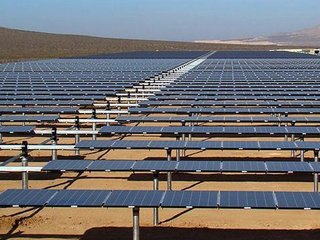MyFitnessPal launches support tools for patients on GLP-1 meds
The tools include content such as educational videos, recipes, and daily nutrition tips
Read more...
Here's some good news for the environmentally conscious.
Two startup companies, Alta Devices and Semprius, have each broken records in their creation of highly efficient solar energy initiatives. Each company make different kinds of solar panels, but both of them have posted record solar energy efficiency rates in the past few days.
Alta Devices, based in Santa Clara, CA, announced that its newly improved panels are clocking in a record-breaking 23.5% efficiency rate, verified by the National Renewable Energy Laboratory (NREL). The previous highest efficiency rating was 22.9%.
Durham, NC-based Semprius, which produces concentrated solar panels, have achieved an efficiency rate of 33.9%, which is also a record. Concentrated solar panels differ from traditional solar panels in that they use lenses that focus light up to 1,000 the intensity of natural sunlight. The previously highest recorded efficiency rate for this type of solar energy was 33%.
Vital to the improvement of these efficiency rates is the use of a special material called gallium arsenide, which is better at absorbing the sun's energy than the more common material in the prdouction of solar panels, silicon.
According to one report, Altia Devices was able to yield a 26.7% efficiency rate from one cell of gallium arsenide. Unfortunately the wiring together of cells to create a full solar panel results in a loss of energy efficiency. Unfortunately, this material is also considerably more expensive than silicon.
Alta Devices is currently gunning for the US Department of Energy's SunShot initiative, the goal of which is to bring solar energy down to the cost of six cents per kilowatt/hour by the end of the decade. This would be on pace to make solar competitive with natural gas and coal.
The DOE predicts that if this goal is met, solar could account for 15-18% of US electricity generation by 2030, as opposed to the 1% it produces now.
[Image Credit: techvert.com]
The tools include content such as educational videos, recipes, and daily nutrition tips
Read more...Advances in technology, like in vitro and microfluidics, have helped advance research
Read more...Robots are taking over the heavy lifting work inside warehouses
Read more...


